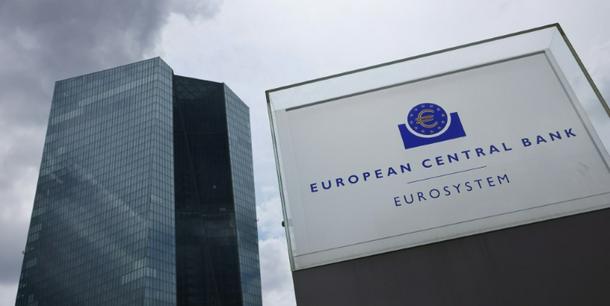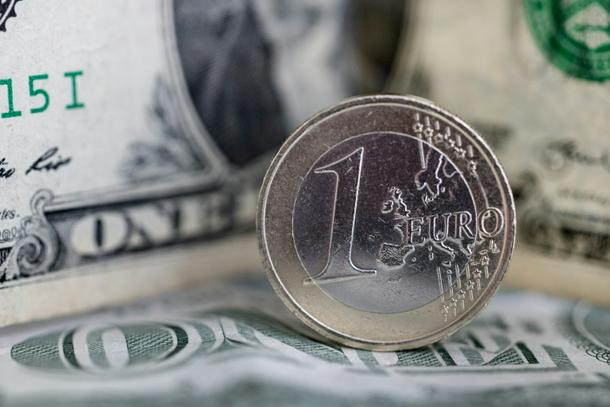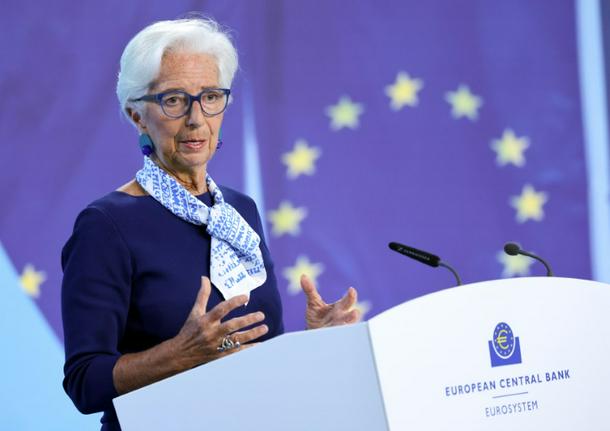
The European Central Bank warned of heightened uncertainy amid trade disputes
Frankfurt (Germany) (AFP) - The European Central Bank held interest rates steady Thursday as policymakers waited to see whether the eurozone would be hit by higher US tariffs threatened by President Donald Trump.
The pause brought to an end a streak of consecutive cuts stretching back to September 2024 that has seen the ECB slash its benchmark deposit rate to two percent.
The swift reduction in borrowing costs for businesses and households in the 20 members of the single-currency bloc has come as inflation has fallen back from the double-digit peaks seen at the end of 2022.
Consumer prices in the eurozone rose at a pace of two percent in June, exactly in line with the ECB’s target for inflation.
The moderate inflation read and encouraging signs of growth meant the ECB was in a “good place”, ECB President Christine Lagarde said at a press conference following the rates announcement.
The outlook however remained “exceptionally uncertain, especially because of trade disputes”, the central bank warned.
A further escalation in trade tensions could deliver a fresh blow to the eurozone economy, with Trump having set a deadline of August 1 to impose a basic tariff rate of 30 percent on the European Union.
But negotiations between Washington and Brussels to find a compromise have meanwhile progressed, raising hopes of a deal.
- Trade negotiations -
Lagarde declined to speculate on the outcome of the negotiations but said that a resolution and reduction in trade-related uncertainty would be “welcomed by any economic actors including ourselves”.
Higher tariffs – wherever their final resting place – could “bring inflation down further than expected” if trade tensions fuelled the euro’s strength against the dollar, she said.

The euro has been rising against the dollar
A stronger euro would make imports cheaper and further suppress inflation. The ECB is already predicting the indicator to dip to 1.6 percent in 2026 before returning to target in 2027.
The euro has surged almost 14 percent against the dollar since the start of the year, although the single currency has fallen from recent peaks.
Lagarde said the ECB was monitoring the impact of euro exchange rates on inflation but added the bank was not targeting a particular exchange rate.
Inflation could also be driven lower if a higher rate of tariffs reduced demand for European exports and prompted “countries with overcapacity to re-route exports to the euro area”, she said.
- ‘On hold’ -
By contrast, a breakdown in global trade and supply chains could fuel a new surge in prices. And a resolution to trade tensions could “lift sentiment and spur activity”, Lagarde said, potentially taking the pressure off prices.
In the face of this dilemma, ECB policymakers kept rates steady, in effect bringing an end to the process of steadily lowering interest rates that started over a year ago.
“You could argue that we are on hold. We are in this wait-and-watch situation,” Lagarde said.
“Any monetary policy decision will for the future be decided on the basis of data,” she said, adding that the “jury is out as to how quickly the uncertainty will be cleared”.

European Central Bank President Christine Lagarde said the bank was not pre-committing to any interest rate path
Exchange rate fluctuations and the still-pending conclusion to EU-US talks were two reasons for the ECB to “to stay put today and keep the powder dry”, ING bank analyst Carsten Brzeski said.
While inflation was still around target there was “very little reason for (the ECB) to leave its ‘good place’”, Brzeski said, echoing Lagarde.
Rate-setters could however still choose to give an extra boost to the eurozone with another cut down the line – especially if trade tensions looked to be having an impact on the economy.
If inflation showed signs of weakening and the economic data looked shaky, the central bank could plump for “one final rate cut at the September meeting”, Brzeski said.